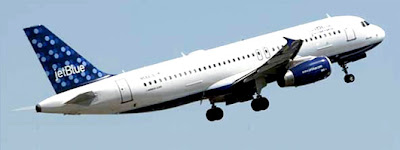by B. N. Sullivan
The U.S. Federal Aviation Administration (FAA) has announced what it calls "a landmark proposal to fight fatigue among commercial pilots by setting new flight time, duty and rest requirements based on fatigue science." The new rules, if adopted, will apply to pilots of all carriers that operate under Part 121 of the Federal Aviation Regulations. It will not apply to pilots at Part 135 carriers.
The FAA spells out details of the new rules in a Notice of Proposed Rulemaking (NPRM) announced on September 10, 2010 [link below]. In summary, the NPRM states:
The proposal recognizes the growing similarities between the types of operations and the universality of factors that lead to fatigue in most individuals. Fatigue threatens aviation safety because it increases the risk of pilot error that could lead to an accident. The new requirements, if adopted, would eliminate the current distinctions between domestic, flag and supplemental operations. The proposal provides different requirements based on the time of day, whether an individual is acclimated to a new time zone, and the likelihood of being able to sleep under different circumstances.
In some areas, the FAA proposes to relax current requirements, while in others, it strengthens them to reflect the latest scientific information. Here are some key differences between the new proposal and the rules currently in place:
- The proposal reflects the universal nature of fatigue. The proposed rules would be the same for all types of Part 121 flights (passenger and cargo airlines): domestic, flag (international), or supplemental (unscheduled). Currently, there are different requirements for each of these categories of operations. The proposed rule does not apply to Part 135 operators, but FAA says it may address fatigue for Part 135 operators in the future.
- Unlike the current rules, the proposal provides a circadian component for reducing the flight time and duty time when the pilot is operating in his or her window of circadian low. The proposal clearly states that fatigue mitigation is the joint responsibility of both the airline and the pilot. A pilot may not accept an assignment if that pilot is too fatigued to fly.
- The proposal would give airlines the flexibility to adopt individual Fatigue Risk Management Systems. Fatigue Risk Management Plans, recently mandated by Congress and now addressed by FAA policy, would set out a carrier’s own policies and procedures for reducing the risk of fatigue and improving alertness. These plans are specific to an air carrier’s type of operations, are subject to the FAA’s review and acceptance, and include fatigue education and awareness training.
Rest
The new rule proposes to set a nine-hour minimum rest period prior to flying-related duty. Under current rules, there is a minimum daily rest requirement of 8-11 hours for domestic flying. For international flying, the current minimum is 8 hours, or twice the number of hours flown.
Flight Time
Weekly: Currently, pilots flying domestically are limited to 30 hours of flight time in any seven consecutive days. Those flying international operations are limited to 32 hours in seven consecutive days, and there is no seven-consecutive-day limit for supplemental operations. The proposal provides all Part 121 pilots with at least 30 consecutive hours per week free from all duty, compared to the current 24 hours free from all duty on a weekly basis – a 25 percent increase.
Monthly: Under the proposal, there is a 100-hour maximum for flight time in any 28 days. Current rules set a limit of 100 hours for every 30 days.
Yearly: There is a current limit of 1,000 hours in any calendar year for domestic flights. Under the proposal, all types of operations will now be limited to 1,000 hours per 365 days.
Duty Time
There is currently a 16-hour duty period between rest periods. The proposal would limit the daily flight duty period to 13-hours, which could slide to nine hours at night (depending on take-off time and number of segments scheduled).
---
Importantly, the provisions of this new rule indicate that the FAA finally has recognized that there are no physiological differences between pilots who fly cargo and those who fly passengers. It's about time that pilots flying for Part 121-Supplemental operators are treated identically to those who fly for scheduled airlines.
Likewise, the elimination of the domestic/international distinction in favor of a focus on the length of a trip will be beneficial. The FAA proposes to deal with longer flights through crew augmentation "rather than simply by extending the allowable flight time."
The NPRM states that crew augmentation requirements should take into consideration "circadian rhythms, acclimation to time changes, and multiple flight segments should be considered in determining how much augmentation is required. Further consideration should be given to the quality of the available rest facility."
The issue of crew fatigue has been a perennial item on the National Transportation Safety Board (NTSB)
'Most Wanted List' for aviation safety improvements. It's good to see some concrete movement on this issue, and it's even better that the proposed rule changes are based on well-established scientific data about fatigue rather than on mere politics.
The 60-day public comment period closes on Nov. 13, 2010.
LINKS:










